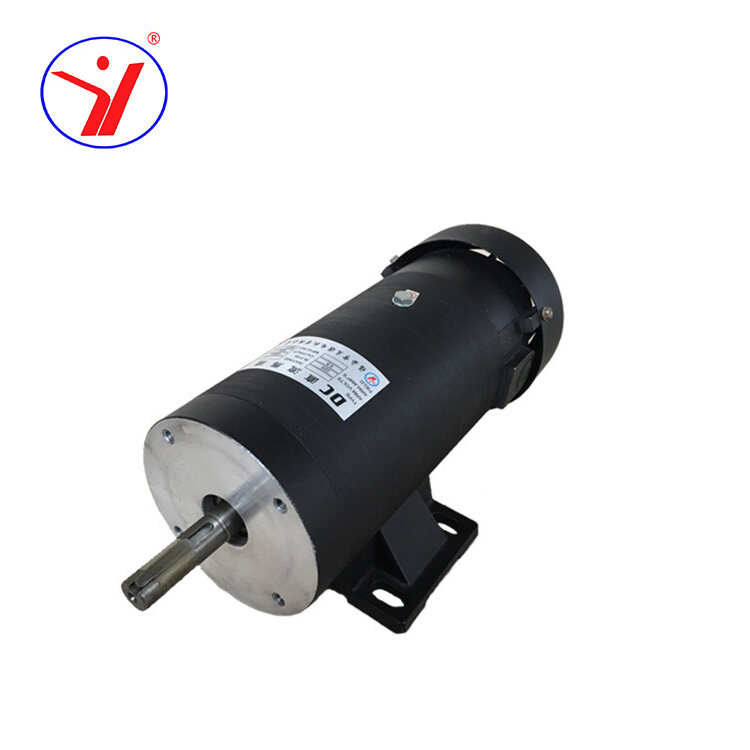24 Volt DC Permanent Magnet Motor: A Comprehensive Guide
The 24 volt DC permanent magnet motor is a versatile and efficient type of motor used in a wide range of applications. From electric vehicles to industrial machinery, these motors offer reliability and performance that make them a popular choice for engineers and designers. In this comprehensive guide, we will delve into the intricacies of the 24 volt DC permanent magnet motor, exploring its working principles, applications, advantages, and more.
Understanding the Basics of a 24 Volt DC Permanent Magnet Motor
What is a DC Motor?
A DC motor, or direct current motor, converts electrical energy from a DC power source into mechanical energy. The motor operates on the principle of electromagnetism, where a current-carrying conductor placed in a magnetic field experiences a force. This force drives the motor's rotation, creating mechanical movement.
Permanent Magnet Motors
Permanent magnet motors use permanent magnets to produce the magnetic field instead of relying on field windings. This design enhances efficiency and reduces the complexity of the motor. The 24 volt DC permanent magnet motor specifically operates at 24 volts, a standard voltage level for many applications, making it a versatile and accessible choice.
Key Components of a 24 Volt DC Permanent Magnet Motor
Armature
The armature is the rotating part of the motor where the electromotive force is induced. It consists of a coil of wire wound around a core, which turns within the magnetic field created by the permanent magnets.
Permanent Magnets
The permanent magnets are fixed in position and generate a constant magnetic field. The quality and strength of these magnets are crucial for the motor's performance.
Commutator and Brushes
The commutator and brushes work together to ensure the current flows in the correct direction through the armature windings. The commutator is a segmented ring attached to the armature shaft, while the brushes are stationary contacts that press against the commutator, transferring electrical current.
How a 24 Volt DC Permanent Magnet Motor Works
The Electromagnetic Principle
When a DC voltage is applied to the motor, current flows through the armature windings, generating an electromagnetic field. This field interacts with the magnetic field from the permanent magnets, producing a torque that causes the armature to rotate.
Commutation Process
As the armature rotates, the commutator and brushes switch the direction of the current in the windings, maintaining continuous rotation. This switching action ensures the motor runs smoothly and efficiently.
Applications of 24 Volt DC Permanent Magnet Motors
Electric Vehicles
Electric vehicles (EVs) benefit greatly from the use. These motors provide the necessary torque and efficiency for driving the wheels of the vehicle, contributing to the overall performance and range.
Industrial Automation
In industrial settings, these motors are used in automation systems, robotics, and conveyor belts. Their reliability and precise control make them ideal for tasks requiring consistent performance.
Renewable Energy Systems
Renewable energy systems, such as wind turbines and solar power systems, often incorporate the permanent magnet motors for energy conversion and management. These motors help in maintaining efficient operations and converting generated power into usable electrical energy.
Home Appliances
Many home appliances, including vacuum cleaners, fans, and power tools, utilize these motors due to their efficiency, compact size, and reliable performance. The 24-volt specification makes them suitable for household power supplies.
Advantages of 24 Volt DC Permanent Magnet Motors
High Efficiency
One of the main advantages is their high efficiency. The use of permanent magnets eliminates the need for field windings, reducing energy losses and improving overall efficiency.
Compact Size
The design of these motors allows for a compact and lightweight construction. This makes them ideal for applications where space is limited or weight is a concern.
Reliable Performance
With fewer moving parts and a simpler design, these motors offer reliable and long-lasting performance. The permanent magnets provide a consistent magnetic field, reducing the risk of mechanical failures.
Low Maintenance
Due to their straightforward design, the permanent magnet motors require minimal maintenance. The lack of field windings and reduced mechanical complexity means there are fewer components that can wear out or fail.
Factors to Consider When Choosing a 24 Volt DC Permanent Magnet Motor
Load Requirements
Understanding the load requirements of your application is crucial when selecting a motor. Consider the torque and speed needed for your specific use case to ensure the motor can handle the demands.
Operating Environment
The environment in which the motor will operate can affect its performance and longevity. Factors such as temperature, humidity, and exposure to dust or chemicals should be taken into account.
Power Supply
Ensure that your power supply can provide the necessary 24 volts DC consistently. Variations in voltage can impact the motor's performance and lifespan.
Efficiency and Cost
While the magnet motors are generally efficient, it is essential to balance efficiency with cost. Evaluate the motor's efficiency rating and compare it with the initial and operational costs to determine the best value for your application.
Installation and Maintenance Tips
Proper Installation
Correct installation is vital for the optimal performance of your motor. Ensure that all connections are secure, and the motor is mounted correctly to avoid vibrations and misalignment.
Regular Inspection
Perform regular inspections to check for signs of wear or damage. Look for any unusual noises, vibrations, or overheating, which could indicate potential issues.
Lubrication
Some permanent magnet motors may require periodic lubrication of bearings and other moving parts. Follow the manufacturer's recommendations for lubrication intervals and types of lubricant to use.
Cleaning
Keep the motor clean and free of dust and debris. This helps maintain efficient operation and prevents potential overheating.
Troubleshooting Common Issues
Motor Does Not Start
If the motor does not start, check the power supply and connections. Ensure that the voltage is correct and there are no loose or corroded connections.
Overheating
Overheating can be caused by excessive load, poor ventilation, or bearing issues. Reduce the load, improve airflow around the motor, and inspect bearings for wear.
Noise and Vibration
Unusual noise and vibration can indicate misalignment, worn bearings, or imbalanced armature. Check the alignment, replace worn bearings, and balance the armature if necessary.
Reduced Performance
Reduced performance can result from voltage fluctuations, worn brushes, or magnetic field issues. Ensure a stable voltage supply, replace brushes if worn, and inspect the permanent magnets for any damage.
Future Trends in 24 Volt DC Permanent Magnet Motors
Advancements in Materials
The development of new materials, such as high-performance magnets and advanced composites, will likely enhance the efficiency and performance. These materials can improve the magnetic properties and reduce weight.
Integration with Smart Systems
The integration of smart systems and IoT technology with motors is becoming increasingly common. Future permanent magnet motors may feature built-in sensors and connectivity for real-time monitoring and control.
Energy Efficiency Regulations
As energy efficiency regulations become more stringent, manufacturers will continue to innovate to meet these standards. Expect to see more energy-efficient designs and technologies in upcoming motor models.
Customization and Modular Designs
Customization and modular designs are gaining popularity, allowing for motors to be tailored to specific applications. This flexibility can lead to better performance and more efficient use of resources.
Conclusion
The 24 volt DC permanent magnet motor is a cornerstone of modern electric motor technology, offering efficiency, reliability, and versatility across a wide range of applications. Understanding its components, working principles, and advantages can help you make informed decisions when selecting and using these motors in your projects. As technology continues to advance, we can anticipate even more innovative and efficient designs, ensuring that the permanent magnet motor remains a vital tool in the world of engineering and beyond.


